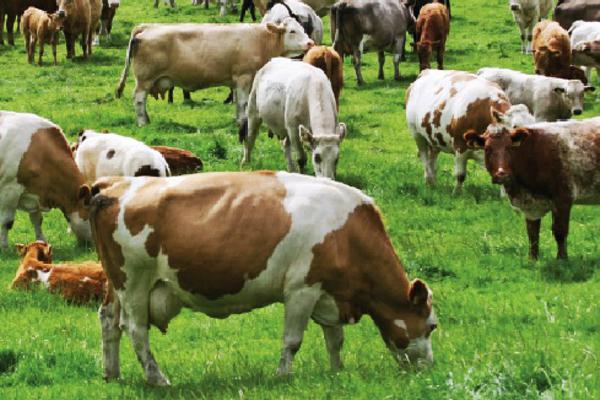With many average cattle weights running 30kg to 80kg behind normal, there has never been more need to maximise liveweight gains at grass by getting the simple things right.
Grass is a high energy feed that, when managed correctly, is capable of delivering an average of 1kg liveweight gain per day on bullocks and heifers over the grazing season.
Farmers should consider factors that will influence animal performance such as maintaining grass quality and worm control strategies.
Producing quality grass
Studies at Teagasc have shown that swards reseeded with perennial ryegrass have a higher feeding value than old permanent pasture. These are also up to 25% more responsive to nitrogen applications early and later in the year.
However, with many dry stock farmers under cashflow pressure after the past six months, making the most of what you currently have and improving management may be a more feasible alternative than reseeding.
Older pasture started to head out in mid to late-May in many areas with later heading perennials now heading out.
During this phase, the leaf content diminishes in the sward and there is increased stem growth.
To maintain grass quality, a shorter grazing rotation of 12 to 18 days should be implemented and swards should be grazed out to 4cm where ground conditions allow. Avoid pre-grazing covers of over 10cm to 12cm (1,600kgDm/ha to 1,800kgDm/ha) at this time of year.
Due to the tight grass supply throughout the spring, in most cases there will be very little dead butt in swards. In some people’s eyes, topping is deemed to be a costly and unnecessary job.
However, on many farms with a low stocking rate, it is a necessity to ensure grass quality remains high and for weed control. Swards with a high percentage of stem should be topped bare (to 3.5cm to 4cm) after grazing to ensure quality re-growth in the next rotation.
Continue with fertilizer applications of 20 to 30 units/acre (0.75-1.2 bags of CAN/acre). This will keep grass growth and leaf content high. On damaged ground or on fields that are low in phosphorous (P) and potassium (K), a compound fertilizer will be required to improve soil fertility and promote root development.
Supplementing at grass
Supplementing cattle with concentrates adds significant cost to the system and can be avoided with good grassland management.
However, in cases where a grass shortage occurs, or where grass quality deteriorates significantly, supplementation may be required to maintain high levels of liveweight gain.
Supplementing with 1kg to 2kg of concentrates will reduce grass demand in a 1:1 ratio. Where grass quality is poor, supplementing with concentrates may help to keep energy intakes high. Approaching late summer and autumn, continental bulls at grass will require supplementation, especially in cold or wet weather conditions.
Dairy-bred calves
Young dairy derived calves need to graze top quality leafy grass, ideally no more than 8cm to 10cm and should not be held to graze out swards to 4cm unless pre-grazing covers are low.
Where poor quality grass (stemmy grass) is being offered to these calves, then supplementation should be considered at a rate of 1kg to 2kg of concentrates per day in order to maintain the target levels of liveweight gain.
Using a leader / follower system for grazing, whereby the calves graze for two to three days and then an older group of cattle or dry cows graze out the sward after them, will maintain high liveweight gains on calves without the need for supplementing. It will also have benefits in reducing the parasitic challenge to calves.






 This is a subscriber-only article
This is a subscriber-only article










SHARING OPTIONS: